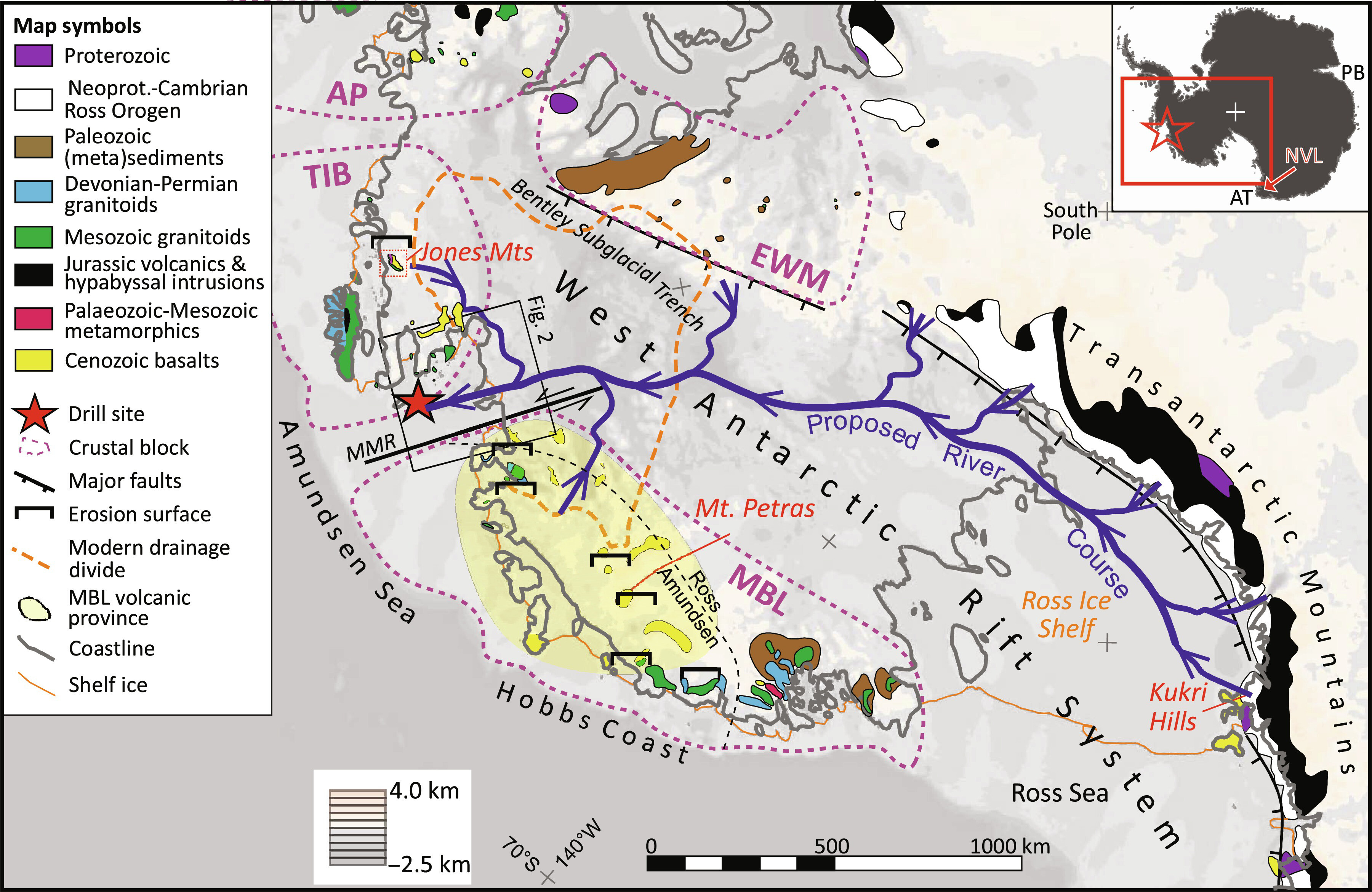During the mid-late Eocene epoch, 44-34 million years ago, large parts of Antarctica were ice-free, creating room for river systems now long frozen. Sediments from the Amundsen Sea came all the way from the mountain range that spans the continent, revealing there was no inland sea in between to capture them.
The world was a hotter place in general 40 million years ago, but the difference was most stark in Antarctica. Great ocean currents drew warm water down from the equator to lap at its margins, before the formation of the Antarctic Circumpolar Current blocked their passage. Consequently, while the highlands were glaciated, and the lowlands got snowy in winter, forests flourished.
Forests need rain, and regular rain means rivers. However, identifying where these ran is challenging. There has been plenty of time for the landscape to change since the ice came. Consequently, we can’t just look at the current lie of the land and assume water flowed to what is now the lowest point.
Drilling through all that ice to establish what it was like long ago is a challenge, but Professor Cornelia Spiegel of the University of Bremen and colleagues found an easier way to identify Antarctica’s lost rivers. They drilled into sediment around the coast using the icebreaker Polarstern.
In the Amundsen Sea, the team found 17-24 meters (56-79 feet) of sediments composed of minerals that do not match those of nearby West Antarctica. Instead, these came from the Transantarctic Mountains, which divide East and West Antarctica. Unfortunately, no fossils were found in these sediments to indicate the ecosystem of the era,
As their name suggests, these mountains run right across the continent, but that crossing is at right angles to a line from the South Pole to the Amundsen Sea. For the minerals to have reached there in the Eocene, they must have been carried by a river 1,500 kilometers (932 miles) long, or more if it meandered.
Such a length is not exceptional – it would barely make the top 100 in the world today, but it would have dominated West Antarctica, then, as now, much smaller than its eastern counterpart.
The Transantarctic debris would have been deposited into a swampy river delta, with the authors choosing the Rhine and the Rio Grande (the US/Mexico one) as modern counterparts.
Mountain ranges will always produce glaciers, rivers, or both to carry the precipitation that falls on them away. However, a much shorter trip to the sea might have been expected. “The existence of such a transcontinental river system shows that – unlike today – large parts of West Antarctica must have been located above sea level as extensive, flat coastal plains,” Spiegel said in a statement.
Sea levels were higher then, with much less water trapped in ice, so these West Antarctic plains must have been a fair bit higher than they are today. On the other hand, they couldn’t have been too high, or they would have been covered in ice, even under the warmer conditions of the time.

For around 10 million years, a river flowed from the Transantarctic mountains to the Amundsen Sea. The route is not known, but the most likely one is outlined here.
Spiegel and co-authors conclude a set of events, including the depositing of sediments in the Amundsen Sea, rift-related magmatism, seafloor spreading, and the rise of the Transantarctic Mountains all started around the same time: 44-40 million years ago. This followed around 40 million years when the area had between relatively tectonically quiet. The deposition may have been stopped 34 million years ago by the onset of permanent glaciation, or by the development of a seaway closer to the mountains.
Given the erosion or subsidence that has taken place since, we can’t expect the return of such a river when West Antarctica is ice-free, something that may happen disturbingly soon. Nevertheless, the authors argue that only by understanding what the world was like back then can we understand how it changed to one with permanent sheets of ice at the poles.
The study is published in Science Advances.
Source Link: A Giant Ancient River System Revealed Beneath Antarctica’s Ice